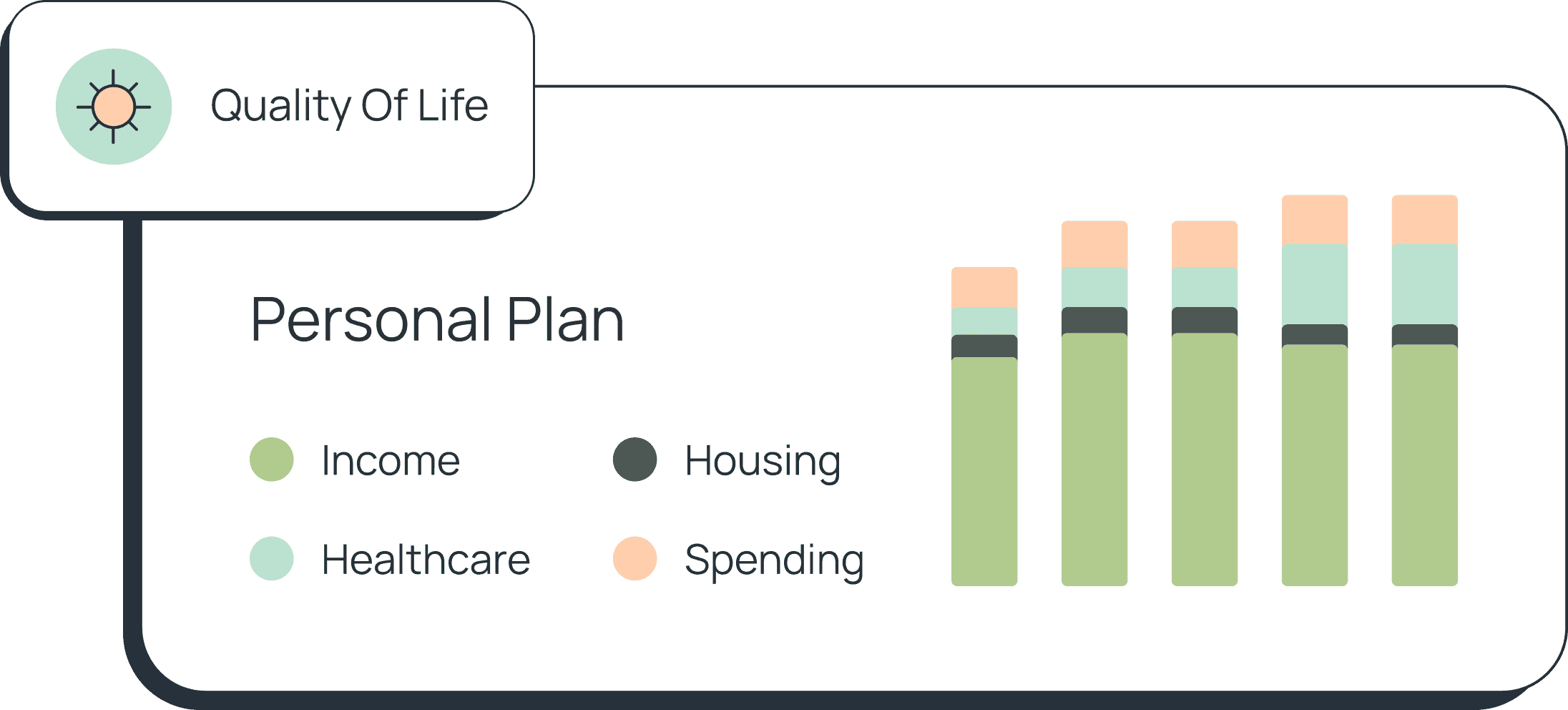Income
Two things are certain in life: death and taxes. And retiring doesn’t exempt you from either of those events. If you withdraw strategically, you can reduce your tax impact.

R. Tyler End, CFP®
•
Published July 21st, 2023
•
Updated January 23rd, 2024
Table of Contents
Key Takeaways
At retirement, certain retirement funds will be taxed on withdrawals while others won’t.
By withdrawing retirement funds in a strategic manner, you can reduce the funds you pay to the IRS.
Tax-efficient retirement withdrawal strategies include exhausting one account at a time and withdrawing funds proportionately to spread out your tax burden.
Two things are certain in life: death and taxes. And retiring doesn’t exempt you from either of those events.
But if you’ve left the workforce, chances are you won’t pay as much in taxes as you did before you retired. Depending on how much your annual income is, you may owe taxes on part of your Social Security, and you could also owe money on your retirement distributions. If you withdraw strategically, though, you can potentially reduce your tax impact.
Ways to Withdraw Money in Retirement
Most retirement withdrawal strategies start with understanding how much you'll pay in taxes and devising a plan. There are various strategies, but they involve calculating the interest you'll pay and weighing that against the gains you'll get by leaving interest-earning assets alone until later.
How Different Accounts are Taxed (Table)
If you're asking, "How can I avoid paying taxes on my IRA withdrawal?" It's important to look at when your withdrawals are taxed. If your IRA is a Roth IRA, you made your contributions with after-tax dollars. That means you enjoy tax-free distributions. The same goes for Roth 401(k)s, although those are less common.
However, a Traditional 401(k), which is very common, is contributed directly from your paycheck, with no taxes paid on the funds. Your employer may match the funds, as well. When you retire, you'll get a tax break on that money, but all those earnings you enjoyed over the years will be taxed as you take the funds out.
Here’s how taxation on various types of retirement accounts breaks down.
| Taxed On Contributions | Taxed When Withdrawing | |
|---|---|---|
| Pensions | No | Varies by state |
| Roth IRAs | Contributions made with after-tax dollars | No |
| Roth 401(k)s | Contributions made with after-tax dollars | No |
| Traditional IRAs | No | Earnings taxed as ordinary income |
| Traditional 401(k)s | No | Earnings taxed as ordinary income |
| Investments (stocks, bonds) | No | Taxed on capital gains |
| Savings | Taxed on interest | Taxed on interest |
Traditional Approach: One Account at a Time
Retirement tax planning has long emphasized withdrawing from one account at a time. You'll probably need to supplement your Social Security income somehow, and your retirement savings will be the vehicle for that.
With the traditional approach, you target one account, exhausting it before moving on to another. Often, retirees choose to pursue taxable accounts through this method, paying taxes in the early years in exchange for some tax-free years later, when the income brackets are likely to be higher.
When it comes to taxes on retirement withdrawals, your Traditional 401(k) or Traditional IRA will probably have the steepest tax bill. Exhausting those first could save you money down the line. You should also look at the taxability of your pension since some states tax pension withdrawals as ordinary income. Your tax bill on stocks and other investments could be higher, but more on that later.
Proportional Approach to Pay Less Taxes
Another approach to how to withdraw retirement funds is a proportional method. With this strategy, you calculate the percentage of your overall savings of each account, then withdraw evenly. This spreads the taxability out and typically reduces your tax burden since you aren’t hit with a big tax bill in the earliest years of your retirement.
What to do When Expecting Large (15%+) Long-term Capital Gains
If part of your retirement savings includes assets subject to capital gains, like stocks, it’s important to realign your strategy to match. If you hold an asset longer than a year, the IRS classifies that as a long-term capital gain and taxes it at a higher rate. Currently, that rate is a whopping 15 percent. But – and this is important – you may pay $0 in taxes if your taxable income falls below a certain threshold, which is currently $80,000. To get around this, when withdrawing money in retirement, many retirees choose to use up all taxable accounts first, then lump those capital gains in with what remains. By the time you’re taking those capital gains withdrawals, your income will be lower and you’ll have to hit a higher threshold to qualify for capital gains.
Final Thoughts
Thinking through various retirement tax strategies can be stressful. But with a little planning, you can reduce your tax on retirement funds. We recommend working with a Certified Financial Planner (CFP®) who can look over your retirement assets and come up with the perfect strategy to make the most of your retirement dollars.
Share this advice

Tyler is a Certified Financial Planner® and CEO & Co-Founder at Retirable, the retirement peace of mind platform. Tyler has nearly 15 years of experience at leading companies in the wealth management and insurance industries. Before Retirable, Tyler worked as Head of Operations Expansion at PolicyGenius, expanding the company’s reach into new products — turning PolicyGenius into an industry-leading disability and P&C insurance distributor. Before working at PolicyGenius, Tyler worked as Wealth Management Advisor at prominent financial services organizations.
As an advisor, Tyler played an integral role in helping clients define goals, achieve financial independence and retire with peace of mind. Through this work, Tyler has helped hundreds of thousands of people get the financial planning and insurance advice they need to succeed. Since founding Retirable, Tyler’s innovative approach to retirement planning has been featured in publications such as Forbes, Fortune, U.S. News & World Report, and more.
Share this advice

Tyler is a Certified Financial Planner® and CEO & Co-Founder at Retirable, the retirement peace of mind platform. Tyler has nearly 15 years of experience at leading companies in the wealth management and insurance industries. Before Retirable, Tyler worked as Head of Operations Expansion at PolicyGenius, expanding the company’s reach into new products — turning PolicyGenius into an industry-leading disability and P&C insurance distributor. Before working at PolicyGenius, Tyler worked as Wealth Management Advisor at prominent financial services organizations.
As an advisor, Tyler played an integral role in helping clients define goals, achieve financial independence and retire with peace of mind. Through this work, Tyler has helped hundreds of thousands of people get the financial planning and insurance advice they need to succeed. Since founding Retirable, Tyler’s innovative approach to retirement planning has been featured in publications such as Forbes, Fortune, U.S. News & World Report, and more.
Free Retirement Consultation
Still have questions about how to properly plan for retirement? Speak with a licensed fiduciary for free.




